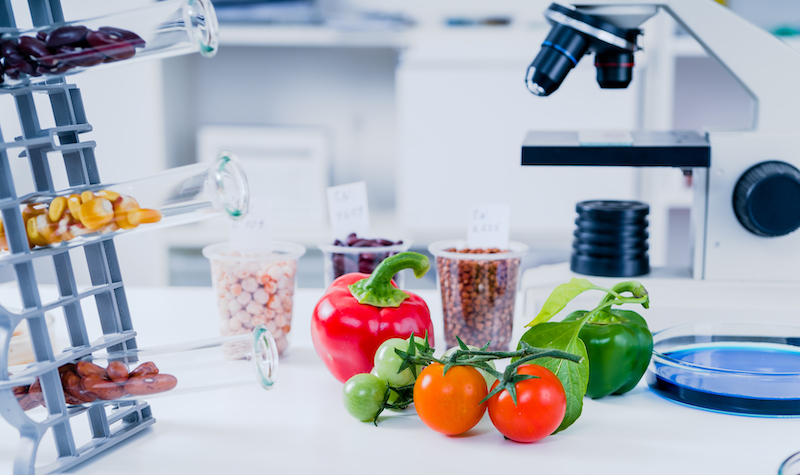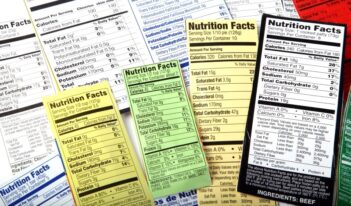
Starting in 2022, food producers will be required to label genetically engineered foods.
Nearly 70 percent of processed foods at U.S. grocery stores contain at least one genetically engineered ingredient. Even though most scientists believe that genetically engineered foods pose no health risks, around half of Americans polled by Pew Research Center think genetically engineered foods are worse for one’s health.
After decades of controversy, many genetically engineered foods will require labels in the United States starting in 2022, due to the national bioengineered food disclosure standard adopted by the U.S. Department of Agriculture (USDA) in 2018.
Almost 80 percent of Americans polled by the Mellman Group in 2015 strongly favor mandatory labeling of what is commonly known as genetically modified organisms, or “GMOs.” But for years, members of Congress had attempted to pass GMO labeling laws with no success. In 2014, however, Vermont was the first state in the United States to pass a GMO labeling law.
Given fear that other states would follow Vermont’s example and subject food producers to a variety of requirements nationally, congressional gridlock eventually thawed. In July 2016, the same month the Vermont labeling requirements were slated to take effect, President Barack Obama signed federal legislation that now preempts states from imposing labeling requirements. That legislation also directed the USDA to develop a federal labeling standard.
USDA officials compiled a list of bioengineered foods to help delineate exactly what needs to be labeled under this program. For a food to be added to this list, it needs to be food authorized for and in commercial production somewhere in the world. Thirteen different foods currently meet these criteria, including at least one type of pineapple, salmon, corn, and soybean. USDA officials review and update this list annually.
A food manufacturer may choose between four different labeling options to comply with this standard. The first option, which is similar to requirements of the preempted Vermont law, calls for food to be labeled with the phrase “bioengineered food.” If the food product is a multigradient food, the regulation requires the label to state that the product “contains a bioengineered food ingredient.”
A second option allows for manufacturers to use a new bioengineered symbol. This symbol, designed specifically not to disparage biotechnology, depicts a stem growing from a field with a sun in the background. Around the symbol appears the word “bioengineered.”
A third option allows manufacturers to use an electronic label, such as a QR code, which a consumer can scan using a smartphone to obtain more information.
The fourth option allows manufacturers to label covered foods with instructions on how to request a text message with the required disclosure.
The USDA labeling standard does not address the question of whether or how food manufacturers can label foods to indicate the absence of genetically engineered ingredients. The USDA maintains that the U.S. Food and Drug Administration retains regulatory authority over absence claims. Currently, the Non-GMO Project remains a popular private labeling regime that privately certifies food that reportedly does not contain genetically engineered ingredients.
While the USDA program allows food manufacturers to choose from a variety of labeling options, there are a few exemptions that allow manufacturers to bypass labeling. First, any food served at a restaurant or similar establishment, such as a salad bar or food truck, is exempt from the program. Second, very small food manufacturers, specifically those with annual receipts less than $2.5 million, are exempt from the program. Third, any food labeled as USDA organic will also be presumptively free of genetically engineered food under this program and will not require a label. Finally, meat or dairy products derived from animals fed genetically engineered crops will not require a label.
Although this program finally establishes a nationwide genetic engineering label for food, something critics have long fought for, some stakeholders argue that the requirements fall short.
Advocates from the Non-GMO Project argue that the USDA program is misleading given that the categorical exemption for meat and dairy products derived from animals fed genetically engineered crops prevents the program from providing meaningful disclosure.
Groups such as the Organic Trade Association argue that the National Bioengineered Food Disclosure Standard “falls short” of fully informing U.S. consumers. The association argues that, among other things, the option to include an electronic label without the need for on-pack language is misleading to consumers. Similarly, the Environmental Working Group opposes the electronic labeling option and argues that rural consumers without “expensive phones” or living with irregular service will be unable to use these kinds of labels.
Both of these major criticisms, however, concern parts of the statutory mandate under the 2016 Act. Specifically, the 2016 Act calls for the USDA to permit an electronic label option and forbids the labeling of meat derived from animals fed with genetically engineered crops.
The USDA labeling requirements will become mandatory in January, 2022.



